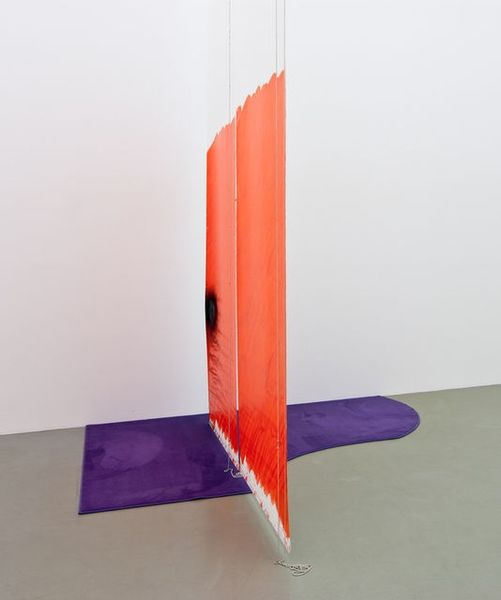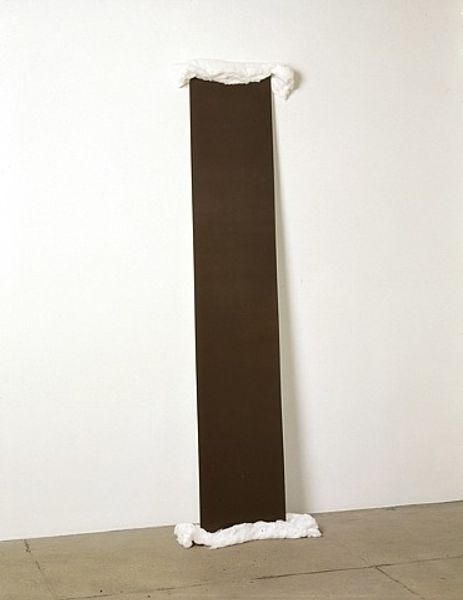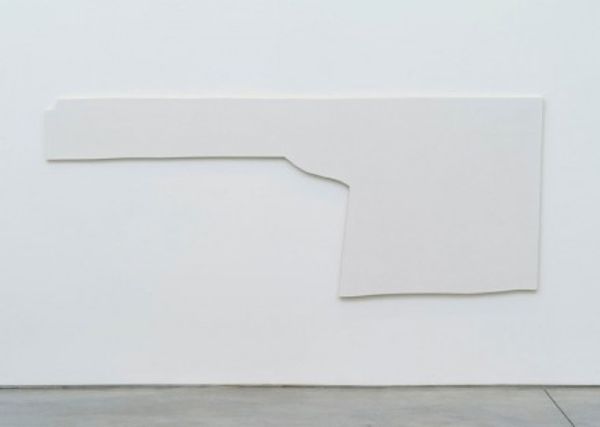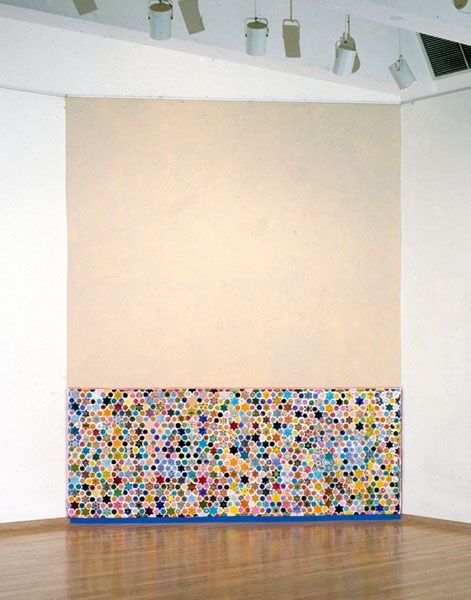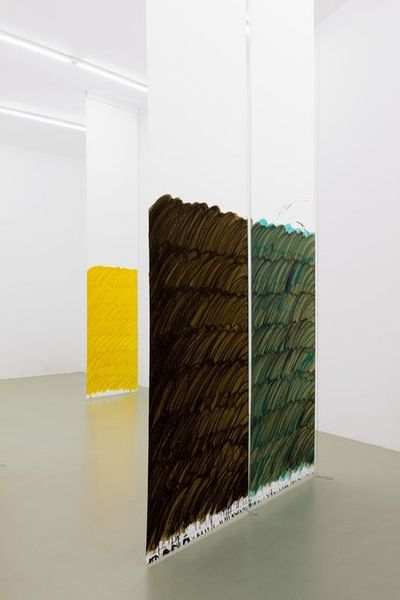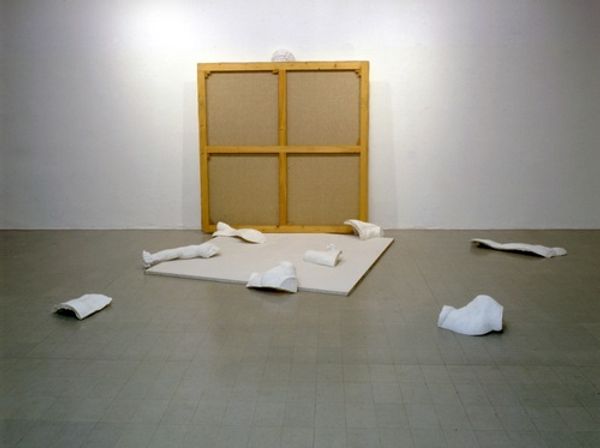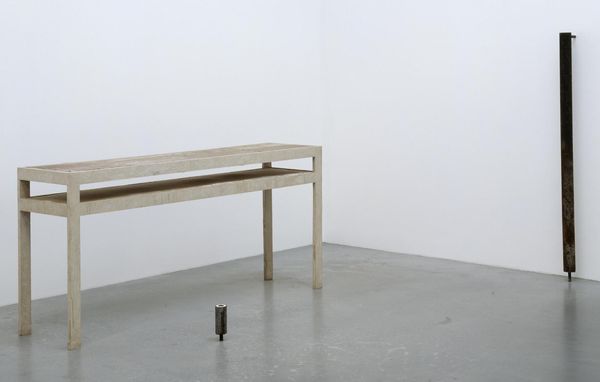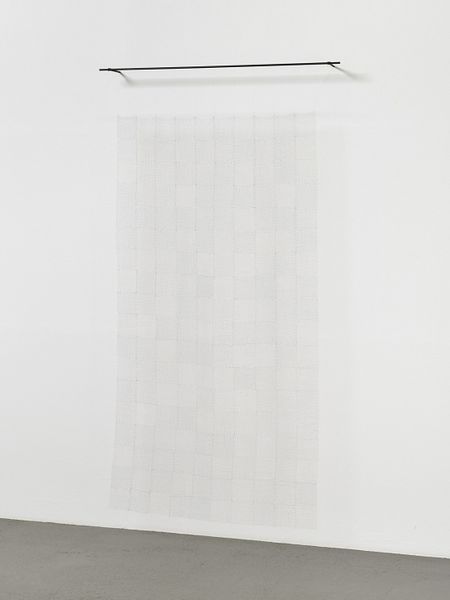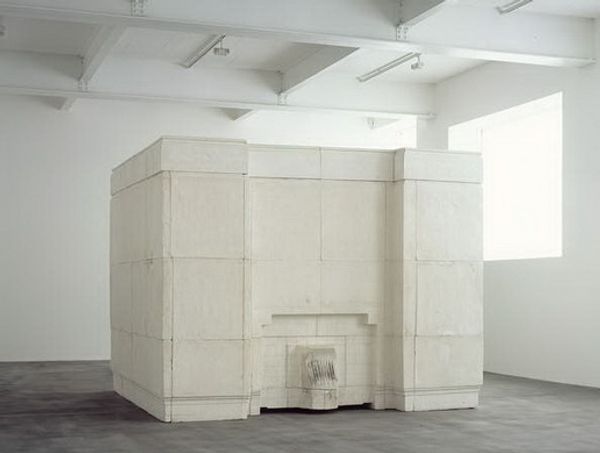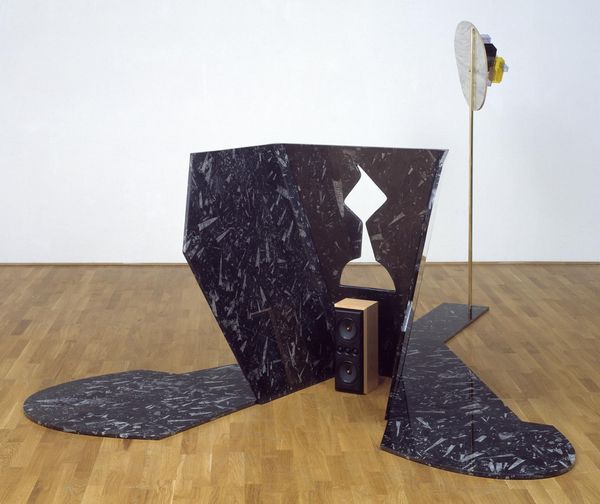
serial-art, installation-art
#
conceptual-art
#
minimalism
#
serial-art
#
wall hanging
#
installation-art
Copyright: Niele Toroni,Fair Use
Curator: Here we have "Imprints of a No. 50 Paintbrush Repeated at Regular Intervals of 30 cm.," a 1968 mixed media installation by Niele Toroni. Editor: My first thought is that it’s surprisingly serene. There’s something meditative about that repeating, almost rhythmic pattern of red dots marching across the surface. Curator: Indeed. Toroni’s work challenges conventional ideas about artistic expression. By utilizing a consistent, repetitive gesture, he’s questioning the authorial presence so central to the art market and artistic reputation. Editor: I see what you mean. The repetitive mark acts almost as a kind of visual mantra. Is the No. 50 brush just a tool then, without emotional weight in itself? Curator: Exactly! The uniformity undermines any sense of personal style, placing emphasis on the systemic nature of artistic creation, almost a bureaucratic approach to art making. This was his core focus, really, divorcing art from self expression. Editor: It also hints at industrialization—the idea of the machine-made object. Although those dots are imperfect, you can sense some loss of humanity with a regular repetition, such as in wallpaper or industrial labels. Yet, there’s also something primal about the circle, an archetypal form with many interpretations from a mandala, the sun, or even cellular division. Curator: A fruitful suggestion, it may very well represent something on that conceptual border. This approach does speak to minimalism’s broader critique of consumerism and the objecthood of art, as it moves into seriality and an industrial aesthetic. Toroni's process makes the gallery itself as a backdrop. Editor: So the impact is less about the dots themselves and more about this calculated placement and negative space? Curator: Precisely. It invites us to think about institutional presentation. By extending the painted surface from the wall onto the floor, it disrupts the assumed boundaries of the artwork. Editor: I find I’m left pondering what “art” truly is, where it starts, and where it ends—in the studio, in the gallery, in the observer's eye? Curator: And that, I suspect, is precisely what Toroni aimed to provoke. A demystification of artistic creation and its display.
Comments
No comments
Be the first to comment and join the conversation on the ultimate creative platform.
